VHO - Recently, the Department of Culture and Sports of Thua Thien Hue province held a ceremony to receive the certificate of recognition of national intangible cultural heritage, folk knowledge "Knowledge of sewing and wearing Hue ao dai".
This is considered the result of the locality's campaign over the past 4 years, aiming to promote and preserve the historical and cultural values of traditional ao dai from the past to the present, build new values, and "turn heritage into cultural assets".
From “medical history”…
Mr. Phan Thanh Hai, Director of the Department of Culture and Sports of Thua Thien Hue province, acknowledged that Hue Ao Dai is a "typical case" in the locality's policy and orientation, making efforts to honor, preserve and develop sustainable cultural values through each historical period, both protecting traditional achievements and updating and developing new, more contemporary values.
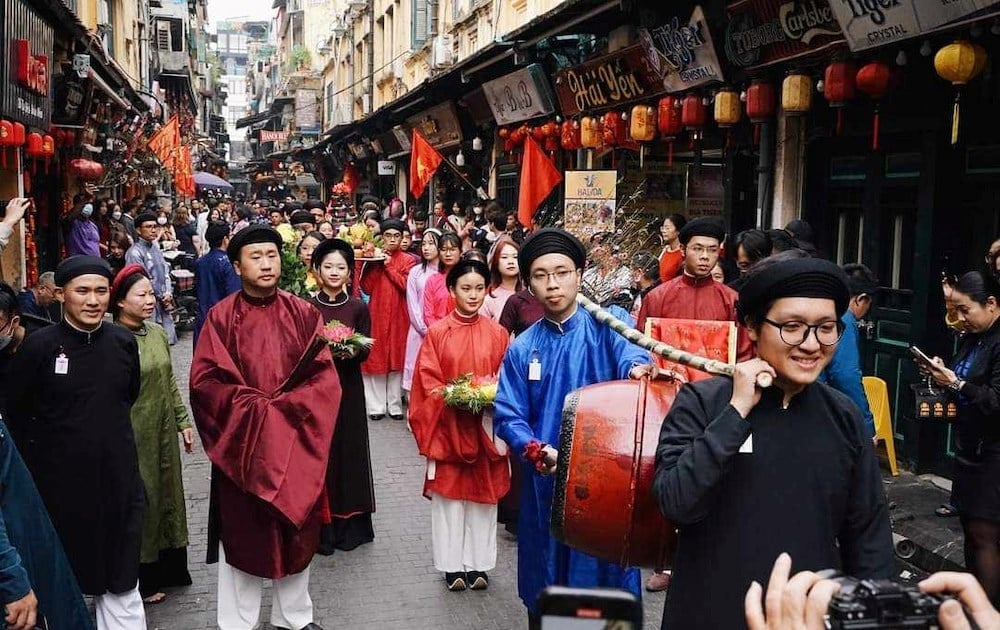
According to researchers, the story of Hue Ao Dai, representing the traditional Vietnamese Ao Dai, has been going on for centuries, related to the history of shaping cultural values from the Nguyen Dynasty.
Up to now, the Department of Culture and Sports of Thua Thien Hue has based on the practical experience of the local ao dai tailoring industry, along with the socio-cultural contents that the traditional costume trend is promoting in Hue, to boldly promote and foster opportunities to revive traditional ao dai designs, innovate and transform them into a long-term development story.
Since 1744, after proclaiming himself King in Phu Xuan, Lord Nguyen Phuc Khoat, with the desire to demonstrate his administrative power and build his political system in the controlled land, carried out many reforms in the administrative apparatus, and applied economic, cultural, and social development policies.
One of his specific manifestations was his decision to choose the traditional five-panel ao dai, modify some details, and institutionalize it as a court dress for mandarins and commoners. The five-panel ao dai thus became the main dress of the people of Dang Trong, affirming their cultural autonomy, different from the people of Dang Ngoai.
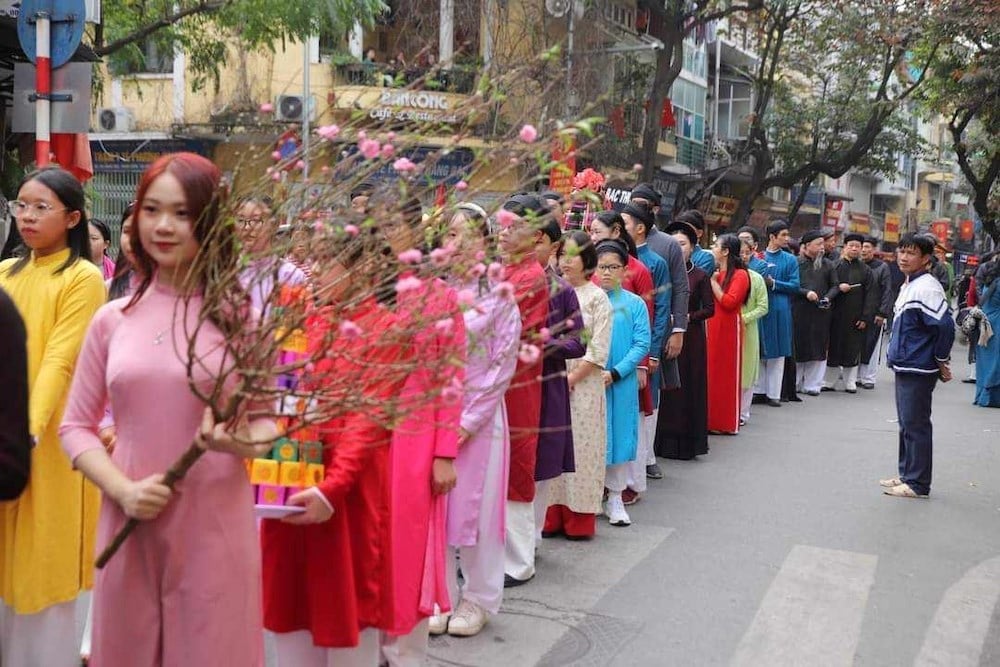
However, it was not until 1826, after stabilizing the royal court received from his father King Gia Long, that Emperor Minh Mang resolutely implemented policies to perfect the country's culture, determining the national costume as the five-panel shirt, widely and uniformly applied throughout the country.
This costume model, designed from folklore, into a "standard of official clothing" suitable for the size and style of Vietnamese people, adjusted to suit customs and etiquette, to be used in each situation and subject, serving cultural activities of people's costumes and official ceremonies.
It was not until the French implemented their colonial policy, the country's monarchy collapsed, that Vietnamese clothing designs changed, gradually becoming Westernized following the integration process, then further transformed to suit each historical period of the country to gradually differentiate. However, in terms of folk rituals, traditional cultural references are still preserved by the people.
The traditional five-panel dress is still passed down in rural villages. On official holidays, it is used as the main costume by the people. Over time, through war and peace, the five-panel dress still exists in the people's sense of clothing.
Especially in Hue, the land of the emperors, through many storms and changes, the cultural material of the dynasty is still preserved by the people, as a solution to maintain the rituals and etiquette of life. No matter how hard life is, the people of Hue still maintain the original family customs and behaviors, preserving all the family rituals.
Thanks to that, the five-panel dress in Hue culture is still preserved, and is solemnly used by Hue people in all ceremonial occasions, all year round. Hue people, in a polite way, are still serious and neat when seeing the traditional five-panel dress appear and in every cultural family, five-panel dresses are always kept as a milestone for the proud family tradition.
To the project and the actual development
Dr. Thai Kim Lan, one of the researchers of Hue culture, expressed that she is also a Hue woman and after many years of living and working abroad, she has always maintained the dignified character of the traditional five-panel ao dai. Up to now, she has returned to Hue, continuing the work of promoting national culture, once again, she participates in the revival of traditional clothing institutions, promoting the development of the national ao dai.
The participation of people like Dr. Thai Kim Lan has strongly influenced the cultural trend of etiquette in Hue and the local Department of Culture and Sports actively promotes the development of this movement. More than 3 years ago, with the consensus of researchers, clans, cultural artisans, and traditional costume tailoring establishments, an action program to rebuild cultural values from Hue Ao Dai was launched.
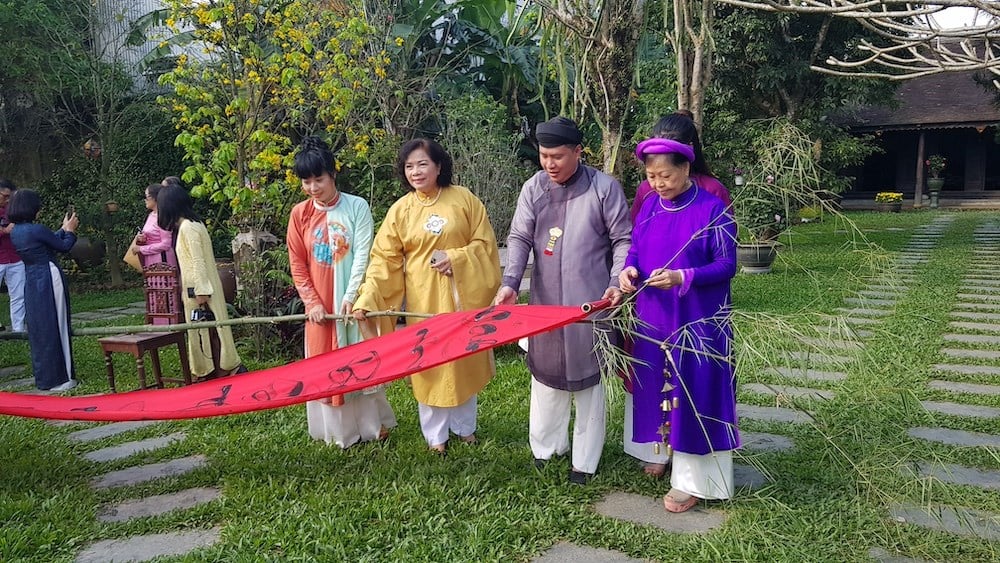
Accordingly, the image of Hue people with the five-panel ao dai has gradually become popular, recreated and honored in all social community activities, from Tet holidays to local cultural activities. On the occasion of international festivals in Hue, at all traditional folk events, the five-panel ao dai is chosen as the main costume for the organizer to conduct the ceremony solemnly, and all participants strictly follow it.
The Department of Culture and Sports of Thua Thien Hue is the unit that most strongly promotes this activity, with the policy of wearing traditional five-panel shirts to salute the flag every week and at conferences and official meetings in local administrative management.
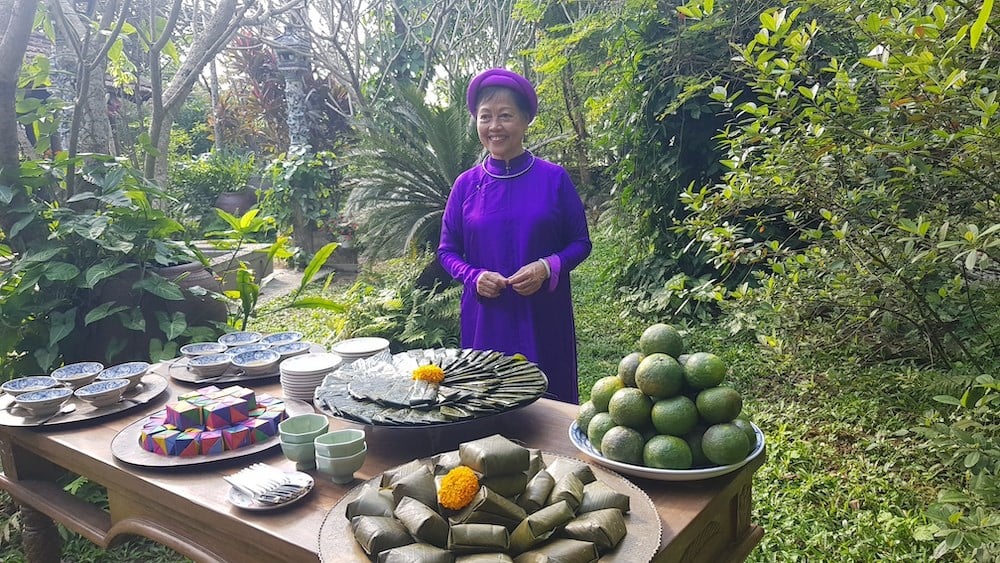
Not only that, through cultural movements, the traditional Ao Dai movement from Hue quickly spread to other localities, boldly promoting at fairs and cultural events from Hanoi to Ho Chi Minh City.
Hue Ao Dai artisans have not hesitated to travel far, to be present at many big programs and events, such as the spring festival in Hanoi's Old Quarter, major cultural trade weeks in Ho Chi Minh City; to Da Nang, to the Central Highlands to organize cultural exchanges.
Some national diplomats and Vietnamese trade counselors abroad also recognized the issue of national costumes and joined this campaign, gradually spreading the image of the national Ao Dai everywhere.
On March 29, 2023, the People's Committee of Thua Thien Hue province issued a decision approving the project "Hue - Capital of Vietnamese Ao Dai", officially recognizing the activities of promoting the development of the traditional five-panel dress in the locality. This event creates more legal basis for the promotion and honoring of Hue Ao Dai, aiming to promote economic and tourism development, affirming the image of Hue Ao Dai in community culture and international diplomacy.
A stronger development orientation for Hue Ao Dai was also determined, with an important milestone to date being that the Ministry of Culture, Sports and Tourism has granted a certificate of recognition as a Cultural Heritage - Folk Knowledge for the Hue Ao Dai sewing profession. The story of "turning heritage into assets" has officially begun.
Source: https://baovanhoa.vn/van-hoa/bai-1-dua-de-an-vao-cuoc-song-113818.html


![[Photo] Visiting Cu Chi Tunnels - a heroic underground feat](https://vstatic.vietnam.vn/vietnam/resource/IMAGE/2025/4/8/06cb489403514b878768dd7262daba0b)





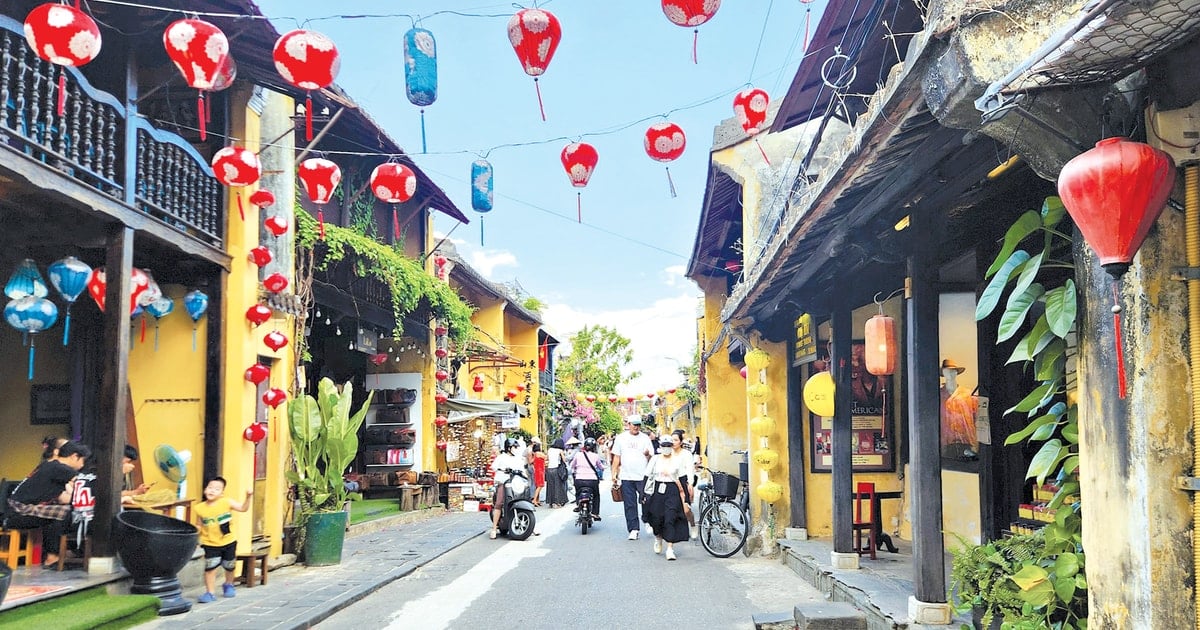

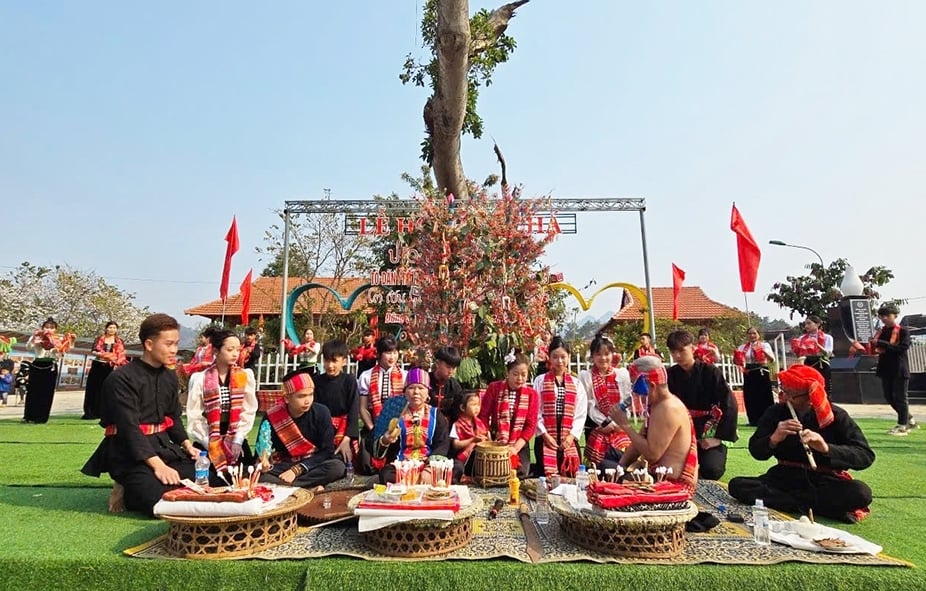

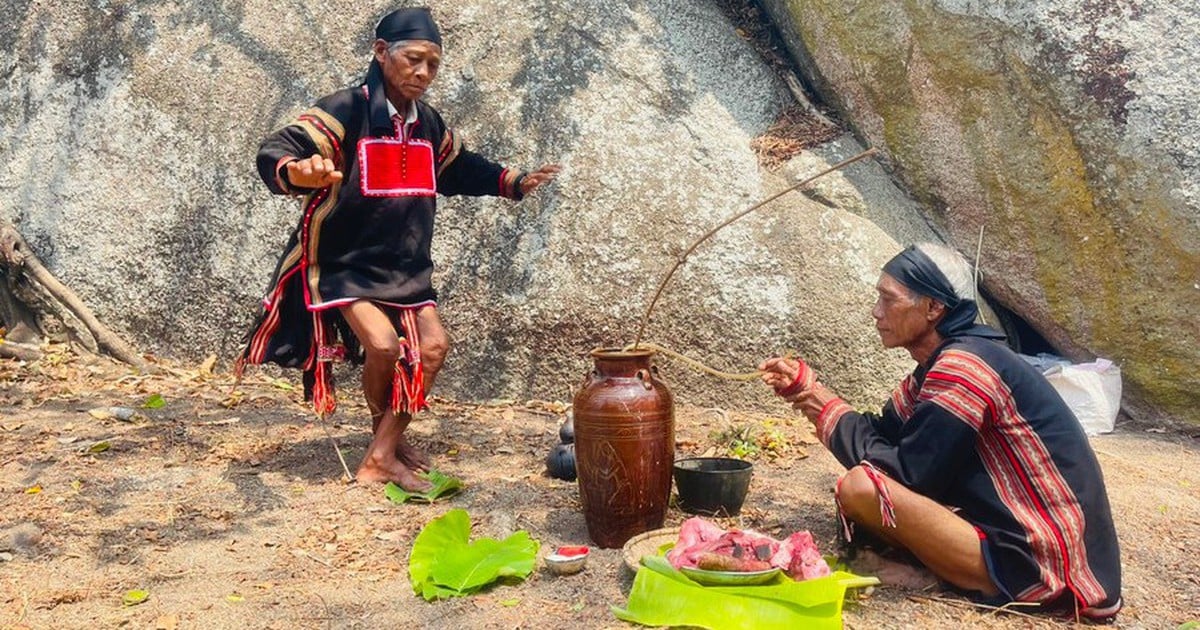

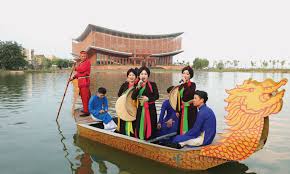

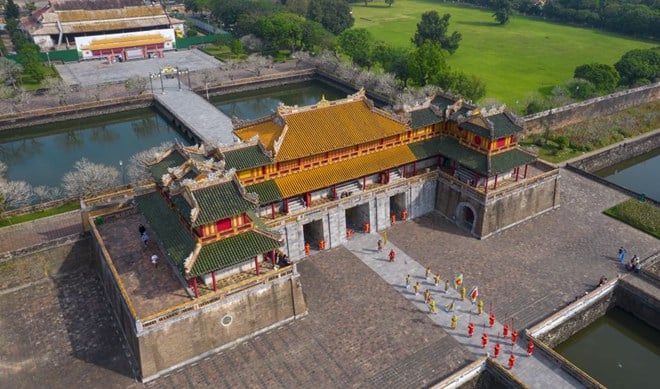












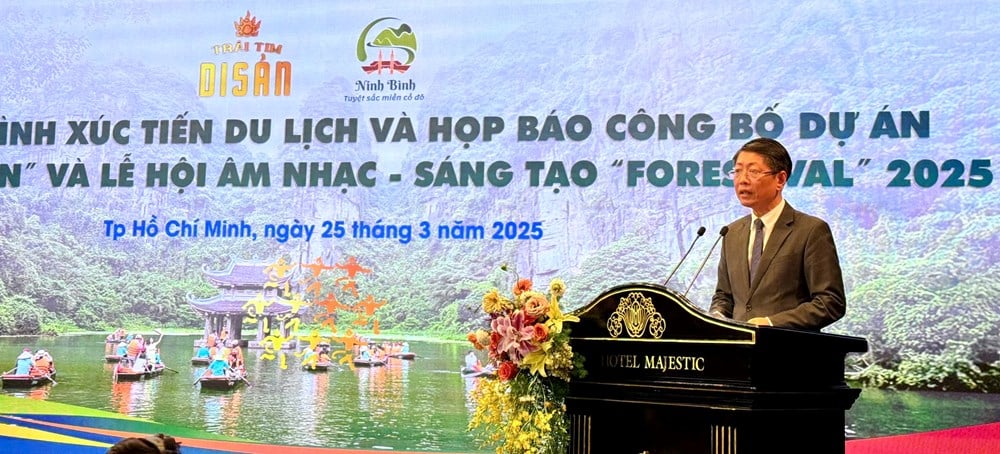
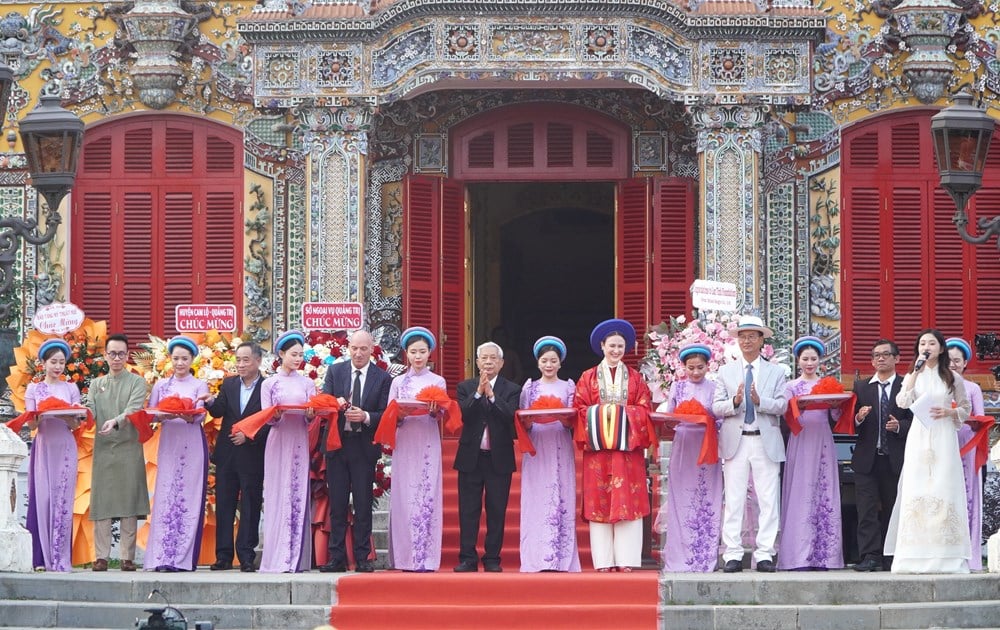



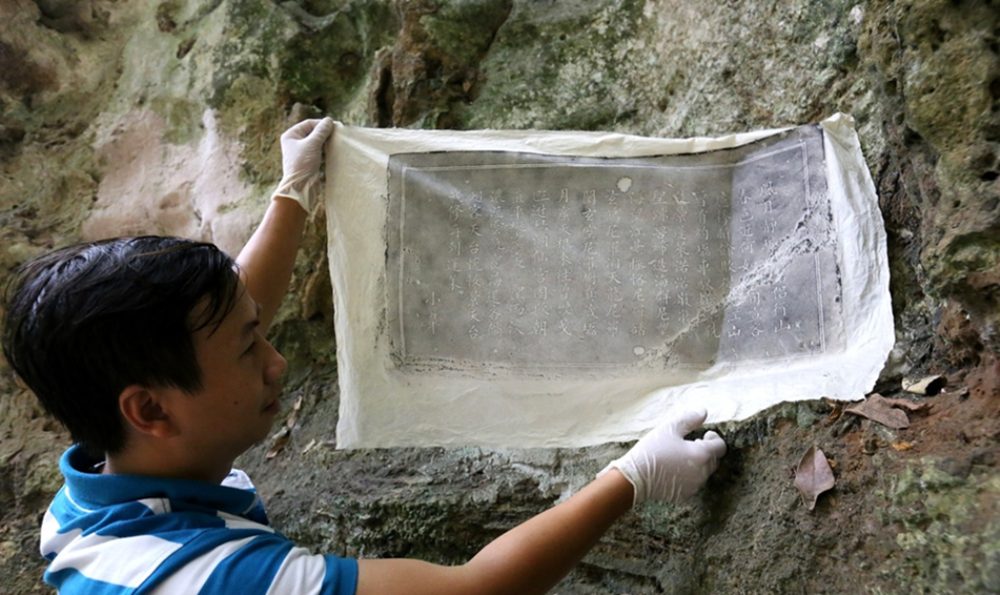





























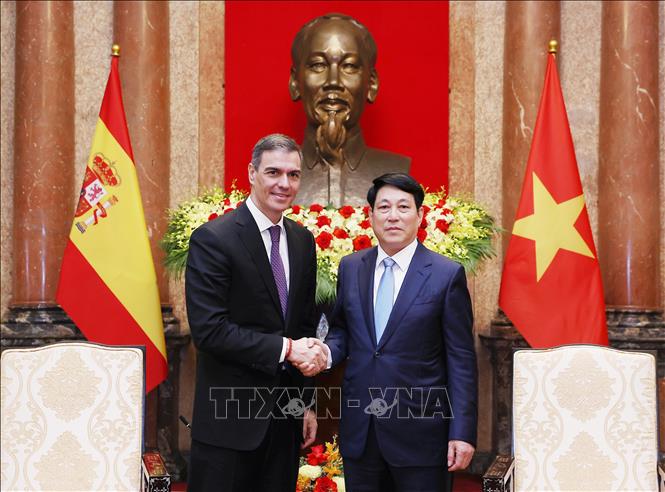










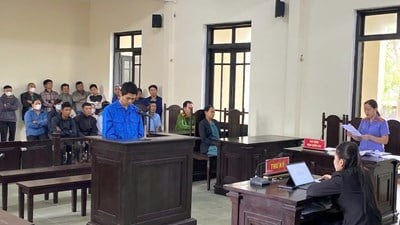
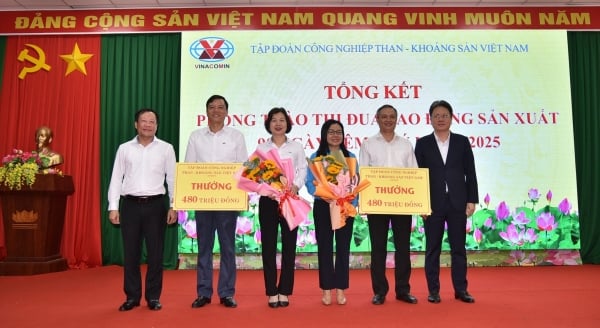












Comment (0)